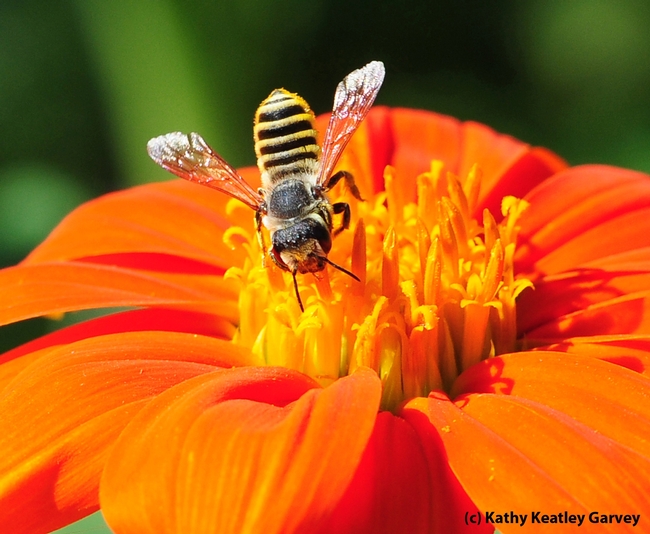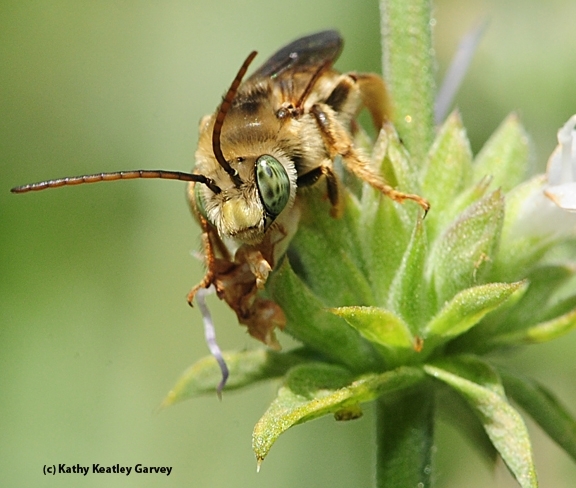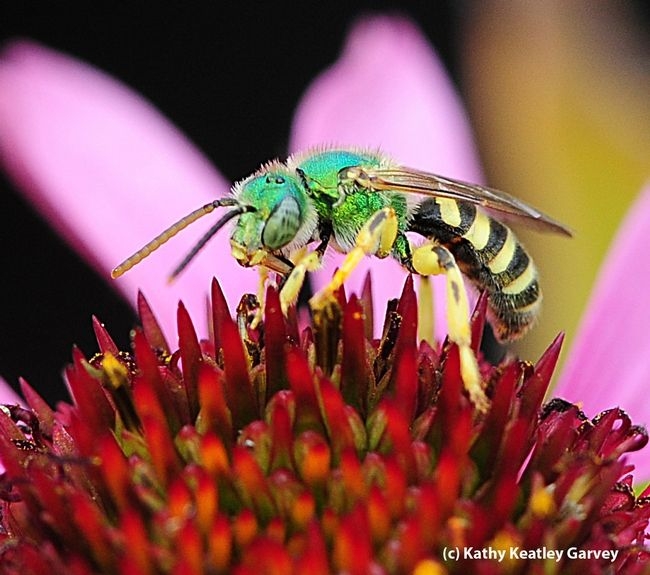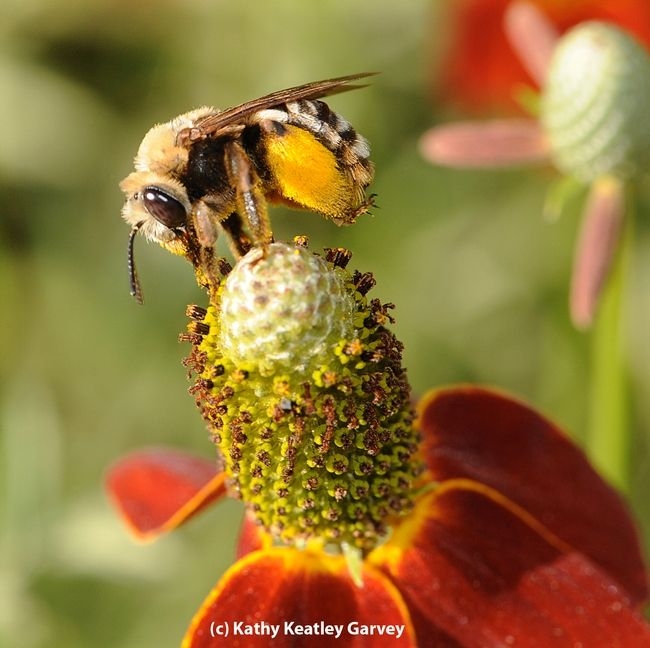
So said conservation and plant-pollinator biologist Shalene Jha of the University of Texas, Austin, when she discussed "The Secret Life of Tiny Bees" with Science Friday host Ira Flatow of National Public Radio on Nov. 10, 2017.
Most solitary bees live underground, she told him. "So they nest under the soil. We also have a lot of bees that nest in stems of trees or in rotting logs. So there's a lot of diversity in where these bees live, and also the kind of social versus solitary lifestyle they maintain."
Fast-forward to Wednesday, Feb. 3 when Jha will speak on "Plant-Insect Interactions and Ecosystem Services in the Context of Global Change" at the UC Davis Department of Entomology and Nematology's virtual seminar. The hour-long seminar begins at 4:10 p.m. Access this Google form to connect to Zoom.
"I'll be presenting an overview of work that integrates community ecology, foraging biology, and populationgenomics to understand ecosystem function, with an emphasis on mutualistic interactions between plants and pollinators," said Jha, an associate professor in the UT's Department of Integrative Biology. "I'll also explore the impacts of human land use on these species interactions and their connection to a variety of ecosystem services."
Jha investigates "ecological and evolutionary processes from genes to landscapes, to quantify global change impacts on plant-animal interactions, movement ecology, and the provisioning of ecosystem services." Specializing in the fields of landscape genetics, population ecology, and foraging ecology, she examines how landscape composition influences gene flow processes, foraging patterns, and population viability for plants and animals. (See Jha lab)
"Our work," she writes on her website, "has provided insight into the environmental drivers of pollinator diversity, has revealed the complex and dynamic nature of wild pollinator foraging, and has exposed critical urbanization and elevation barriers to plant and pollinator gene flow across historic and contemporary time periods."
Jha joined the University of Texas faculty in 2011. She previously served at UC Berkeley as a UC President's Postdoctoral Fellow, Environmental Science, Policy and Management, from 2009 to 2011. Prior, she worked as a graduate research and teaching assistant in Ecology and Evolutionary Biology at the University of Michigan, Ann Arbor.Shalene Jha
Jha holds a bachelor of science degree in biology from Rice University, magna cum laude, 2004. She obtained her doctorate from the University of Michigan in 2009, where she focused on ecology and evolutionary biology. Postdoctoral work in ecology and population genetics followed at UC Berkeley.
Agricultural Extension specialist Ian Grettenberg, seminar host, coordinates the department's winter seminars. For technical information on the virtual seminar, contact him at imgrettenberger@ucdavis.edu.
What are some of the solitary bees, many of which go unnoticed? Here's a sampling.
Attached Images:

A native bee, Megachile fidelis, foraging on a Mexican sunflower (Tithonia) in the Häagen-Dazs Honey Bee Haven, UC Davis. (Photo by Kathy Keatley Garvey)

A male longhorned bee, Melissodes communis, in Davis. (Photo by Kathy Keatley Garvey)

A male metallic green sweat bee, Agapostemon texanus, foraging on a purple coneflower at the former Mostly Natives Nursery in Tomales, Marin County. (Photo by Kathy Keatley Garvey)

A female sweat bee, Svastra obliqua expurgate, foraging on a purple coneflower in Davis. (Photo by Kathy Keatley Garvey)